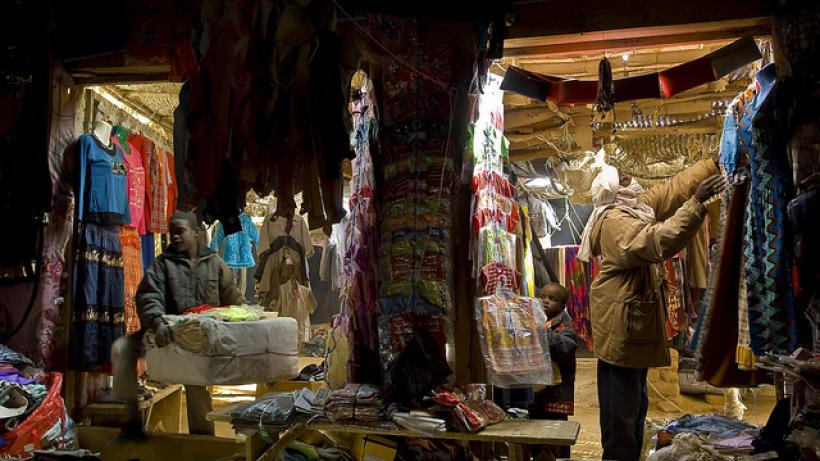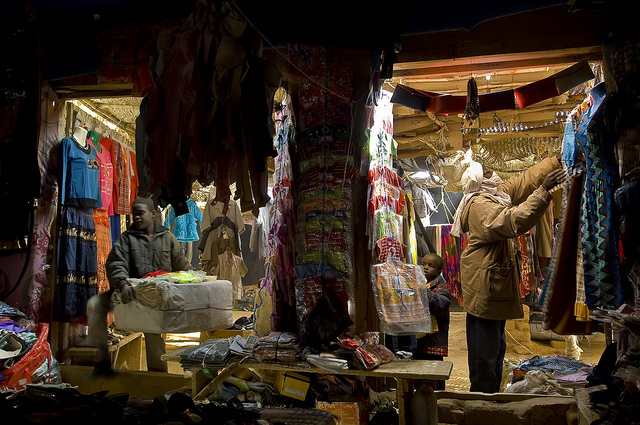
Proceed with caution: South Sudan and the East African Monetary Union
South Sudan's accession into the East African Community signals a strong commitment to regional integration. Greater stability after the conflict will however depend upon a renewed focus on stable macroeconomic policy and fiscal discipline.
Peace and macroeconomic stability, first
In September 2016, South Sudan deposited its accession instruments to the East African Community, making it a fully-fledged member. In this context, it will be required to implement the provisions of the Customs Union and Common Market Protocols. At the same time, it will now also partake in the negotiations on the forthcoming East African Monetary Union (EAMU), scheduled to be implemented in 2024.

Darfurian Refugees in Eastern Chad
Image credit: European Commission DG ECHO
However, this is not the country’s current priority, as South Sudan grapples with an ever deteriorating economy with inflation rates of over 600%. Therefore, there is no doubt that all the focus of South Sudan’s current effort needs to be on restoring macroeconomic stability. This will only be possible after the full cessation of hostilities and restoration of fiscal and monetary discipline. Without the fundamentals in place, the economic situation in South Sudan will continue to deteriorate and growth and development will not be able to take off in the world’s newest nation.
Variable geometry
Given this current economic situation and the prospects for the forthcoming years, it is unlikely that it will be feasible or desirable for South Sudan to join the monetary union at its inception. This is possible however as one of the major advantages of the EAMU Protocol compared to its counterpart from the European Union is that it has provisions for variable geometry - each EAC partner state is neither obliged to nor are they able to join EAMU before achieving the convergence criteria. These criteria, to ensure macroeconomic convergence and stability in the advent of the union, outline ceilings on inflation, fiscal deficits and public debt as well as a floor on the international reserves. Each partner state will have to achieve these for three years consecutively before they can be admitted to the monetary union. The provision of variable geometry, therefore, provides the necessary flexibility for each partner state to only join when they are ready, which is a benefit to the monetary union overall as well.
As noted, macroeconomic stability is the main economic goal that the South Sudanese government should strive for. In this respect, ceding monetary policy to an independent institution may be beneficial as it will remove the capacity for the central bank to continue to finance the ever growing fiscal deficit. Furthermore, relinquishing its independent monetary policy at this point in time may not actually have such a big effect on the South Sudanese economy given that currently it is a relatively ineffective instrument; any attempts to utilise monetary policy to stabilise real economic activity are lost due to high domestic inflation and the rapid exchange rate depreciation.
Structural differences between South Sudan and other EAC economies
South Sudan would still face the challenge, however, of having a regional central bank determine its monetary policy with an economy that is structurally very different from other member states in the EAC. A monetary union functions most effectively, when economies of the member states are structurally aligned. Whilst the 5 other member states rely on commodity exports and import oil, South Sudan’s economy is nearly wholly dependent on oil exports. External economic shocks that affect the oil prices, therefore, will have the opposite effect on South Sudan compared to its member states. With a common monetary and exchange rate policy, a supranational central bank will not be able to implement policy that benefits both sets of countries.
Labour mobility between sectors within the domestic economy and between the domestic and regional economies could compensate for the loss of national monetary policy. In particular, there is less need for the exchange rate to underpin economic adjustments. Although labour mobility is one of the main features of the Common Market Protocol, its implementation to date has been gradual and therefore it will be some time before full liberalisation happens. Furthermore, as South Sudan has just joined the EAC it still needs to put in place the relevant pieces of the Customs Union and the Common Market Protocol. This in turn limits the effectiveness of labour mobility as a compensatory economic adjustment tool. Additionally, in the case of South Sudan, given its overall low human capacity as a result of the decades of conflict, labourers from other parts of the region may be in a more favourable position to move depending on the circumstances.
Proceed with caution
It will be in South Sudan’s interest to actively pursue regional integration and through this actively aim to address the convergence criteria. These will provide the targets for South Sudan through the external imposition of monetary discipline and provide a strong signal for investors and others. Furthermore, whilst it will be in South Sudan’s interest to integrate further with regional partners, it will need time to fully implement the Customs Union and Common Market Protocols. To date, South Sudan has negotiated a three-year window with the EAC for this. This integration within the region will be a crucial step that South Sudan will have to pursue before considering joining the monetary union.
Overall, peace and macroeconomic stability continue to remain the primary objectives of South Sudan’s current economic management. Peace can bring about the restoration of normal governance. Normal governance would allow the cabinet to put in place a macroeconomic programme with realistic fiscal targets that would limit borrowing to those funds that can be contractually borrowed abroad and monetary targets that would not be inflationary. However, as it looks forward towards further integrating with the EAC, it should continue to proceed with caution by participating in the deliberations on the monetary union to understand its implications for the South Sudanese economy while simultaneously working on the convergence criteria.
Blog is based on the Policy Note by Chris Adam, Charles Data Alemi and Astrid R.N. Haas

